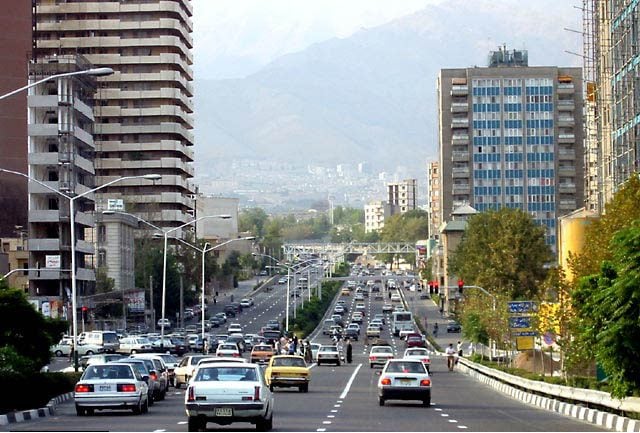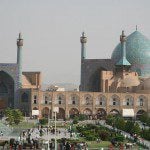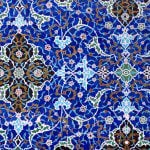
(Wikipedia Commons public domain photograph)
A bit more from Gilles Kepel, Jihad: The Trail of Political Islam, translated by Anthony F. Roberts (Cambridge, MA: Belknap Press, Harvard University Press, 2002):
During the 1960s, at about the same time that Sayyid Qutb’s life was nearing its end in Egypt, Iranian Islam was beginning to take shape. (It was, of necessity, quite distinct, since Egypt and Qutb were Sunni and Iran is Shi‘ite.) There were two “poles” to the development:
Young militants had begun to reinterpret Shiite doctrine within a revolutionary context, inspired by Marxism and the concerns of the Third World. At the same time a section of the clergy, symbolized by Khomeini, began to confront the shah by adopting virulently anti-modernist positions. The ayatollah’s political genius lay in appropriating the aspirations of the young militants. Their endorsement allowed Khomeini to include in his audience the educated urban middle class who otherwise would have remained aloof from a personality perceived as preposterously traditional and reactionary.
The most influential intellectual figure for the young militants — apart from Khomeini — was Ali Shariati (1933-1977), who belonged to a strictly religious family and had studied in Paris, where he had been influenced by exiled Algerian independence fighters. The ideals he learned from leftist intellectuals and Third World revolutionaries such as Jean-Paul Sartre, Che Guevara, and Frantz Fanon were passed on to the Shiite militants. In the process, he reread religious doctrine, whose interpretation he disputed with the “reactionary” clergy. (37)
Shariati attacked the comfortable status quo that had long existed between “church” and state, which he regarded as a clerical compromise with iniquity. Those who bought into this compromise postponed earthly action and simply waited for the return of the Mahdi and for a reward in heaven:
But where his Marxist friends would have rejected the entire system as another opiate of the people, Shariati attacked only the reactionary clergy. He claimed that the true interpretation of Shiite doctrine lay not in flagellation, quietism, and awaiting the Messiah but in continuing the fight against state injustice begun by [the Prophet Muhammad’s son-in-law and grandson] Ali and Hussein. It was futile to bewail the martyrs’ fate; instead, their example should be followed by taking up arms against the shah, the iniquitous monarch of the day, just as they did in their time against the usurper Sunni caliphs. In this doctrine, Shariati was in line with the thinking of Qutb, who called on his disciples to destroy the impious state as the Prophet Mohammed himself had destroyed idolatrous Mecca. (38)
In some ways, Shariati’s synthesis of Shi‘ite Islam and Marxism reminds me a little bit of al-Ghazali’s finding a way in the eleventh century to harmonize the legalistic Islam of his day’s Sunni orthodoxy with a Sufi mysticism that, to some, had seemed potentially or actually antinomian.
When he translated Frantz Fanon’s The Wretched of the Earth into Persian, Shariati rendered the difference between “oppressors” and “oppressed” with the Koranic terms mustakbireen (the arrogant) and mustadafeen (the weakened or disinherited), thus transposing the theory of class struggle into the terminology of Islam and giving it a central importance that it did not have in traditional doctrine. (39, rectifying an obvious error in italicization)












